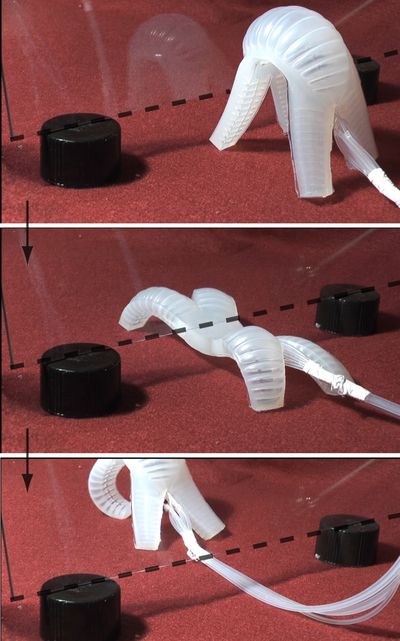Nature inspires new robot

LOS ANGELES – Harvard scientists have built a new type of flexible robot that is limber enough to wiggle and worm through tight spaces.
It’s the latest prototype in the growing field of soft-bodied robots. Researchers are increasingly drawing inspiration from nature to create machines that are more bendable and versatile than those made of metal.
The Harvard team, led by chemist George M. Whitesides, borrowed from squids, starfish and other animals without hard skeletons to fashion a small, four-legged rubber robot that calls to mind the clay animation character Gumby.
In recent years, scientists have been tinkering with squishy robots designed to squeeze through hard-to-reach cracks after a disaster.
“The unique ability for soft robots to deform allows them to go places that traditional rigid-body robots cannot,” Matthew Walter, a roboticist at the Massachusetts Institute of Technology, said in an email.
The Harvard project, funded by the Pentagon’s research arm, was described online Monday in the journal Proceedings of the National Academy of Sciences.
The new robot, which took two months to construct, is 5 inches long. Its four legs can be separately controlled by pumping air into the limbs, either manually or via computer. This gives the robot a range of motions including crawling and slithering.
Researchers eventually want to improve the robot’s speed, but were pleased that it did not break from constant inflation and deflation.
“It was tough enough to survive,” said Harvard postdoctoral fellow Robert Shepherd, adding that the robot can traverse on a variety of surfaces including felt cloth, mud and Jell-O.